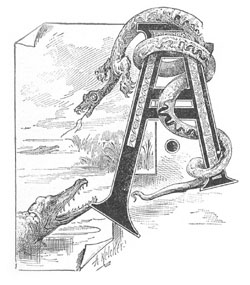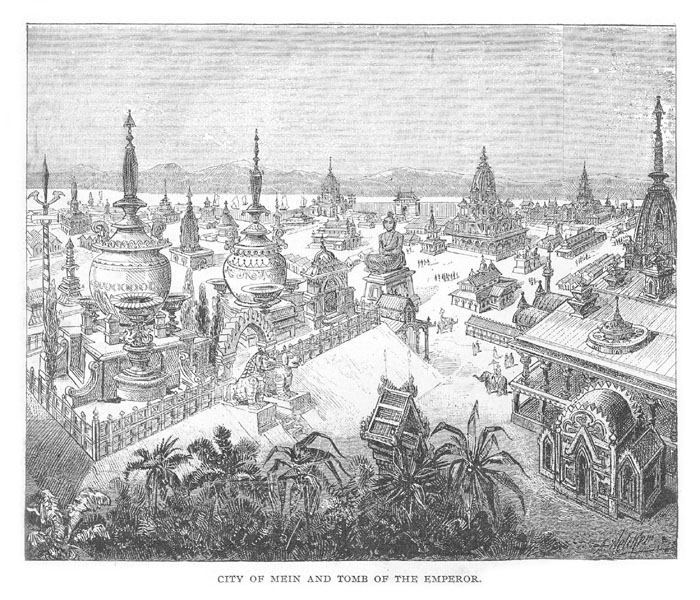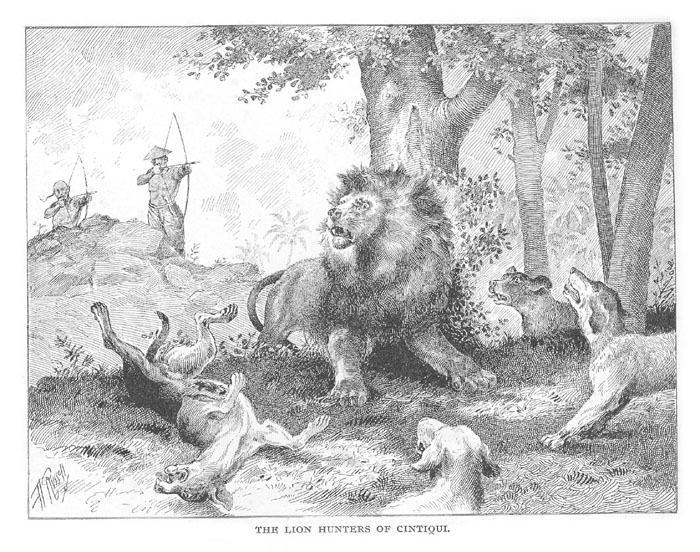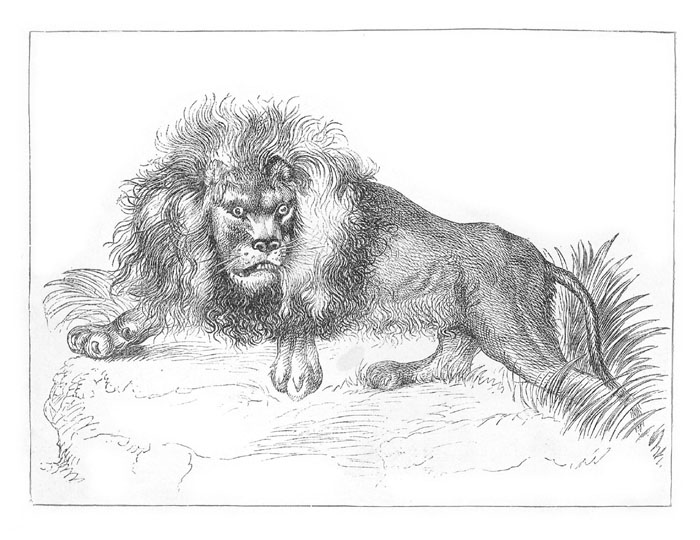IN THE LAND OF GOLD AND UGLY BEASTS.
 |
POLO CONFOUNDS CROCODILES WITH SERPENTS.
Polo speaks of the country being infested with great serpents, growing to a length of thirty feet, and bodies of proportionate thickness. He describes them as having two little feet near the head, armed with three talons or claws like lions, while their eyes were larger than a loaf, and of exceeding brightness. They had mouths and jaws so very wide that they were able to swallow a man, and with teeth so strong and sharp that they were able to rend the largest animals; they indeed attacked and devoured lions, wolves and other beasts. Their appearance struck great terror to the natives, who destroyed them by fastening iron spikes in the tracks through which these great animals usually passed, and as these trails were invariably followed by the animals in going to and from the water, they thus empaled themselves upon the sharp instruments thus set. When the animal was killed, the native hunters took off the skin, which they used for various purposes; but the most precious thing obtained from the creature was its gall, which the people used as a medicine, esteeming it of the greatest virtue for the curing of mad-dog bites, and for carbuncles and all malignant eruptions. It is not difficult for us to determine, though the description is inexact, that the creatures thus described were crocodiles such as infest all the rivers of the lower countries of Asia.
THE TARTAR ROBBERS AND THEIR MEANS OF PREVENTING TORTURE.
The Tartars of that region were great robbers, and being armed with spears and strong bows, and protected with an armor made of the hides of crocodiles and buffaloes, they were enabled to overcome any small party whom they went against. Living by robbery and rapine, they provided themselves against every emergency, and as they carried death in all their attacks, so they expected that their crimes would sooner or later bring them to a more wretched end; for it was customary at that time to put such felons to death, when captured, by the most horrible tortures. The robbers carried with them a potent poison which they swallowed when they found themselves unable to escape; but to prevent them from dying in this manner, and thus cheating Justice, the lords of the Great Khan, who were sent against them, carried potions of dog's dung which they forced the captives to swallow, thus causing them to vomit the poison, and leaving them to suffer the tortures which would then be inflicted upon them.
One of the most curious customs practised by the strange people in the province of Carazan is thus described by Polo: "When one of their women is once delivered, she forsakes the bed, washes the child and dresses it, and then the husband lieth down, and keeps the child with him forty days, not suffering it to depart; is visited all that time by friends and neighbors to cheer and comfort him. The woman looks to the house, and carries the husband his broths to the bed, and gives suck to the child by him."
A GOLD AND SILVER MONUMENT SET OVER THE BODY OF A KING.
The next remarkable city described by Marco was called Mein, the capital of the province of that name, which was a part of the Great Khan's kingdom. But prior to its conquest by Kublai, it was governed by a king whose name is not given, but who left a peculiar memento of his sovereignty: --when being ready to die, he commanded that near his sepulchre there should be erected two towers, in the form of pyramids, one at the head, the other at the feet, both of marble, of the height of sixty feet. On the top of
 |
Eastward of Mein was the province of Cangigu, which was also a country yielding vast quantities of gold, and which lay near the sea. These people are described as being handsomely made, and given much to the practice of tattooing, which Polo describes as a process of embroidering the flesh.
THE LION HUNTERS OF CINTIQUI.
Eastward of Cangigu is Amu, where the people worshipped idols and made sacrifices to them both of flesh and the products of the field. The people were very wealthy, both men and women wearing bracelets of gold and silver of great value on their arms and legs. The province of Tholoman, which is eighth days further eastward, was also remarkable for its wealth of the precious metals; but in
 |
 |